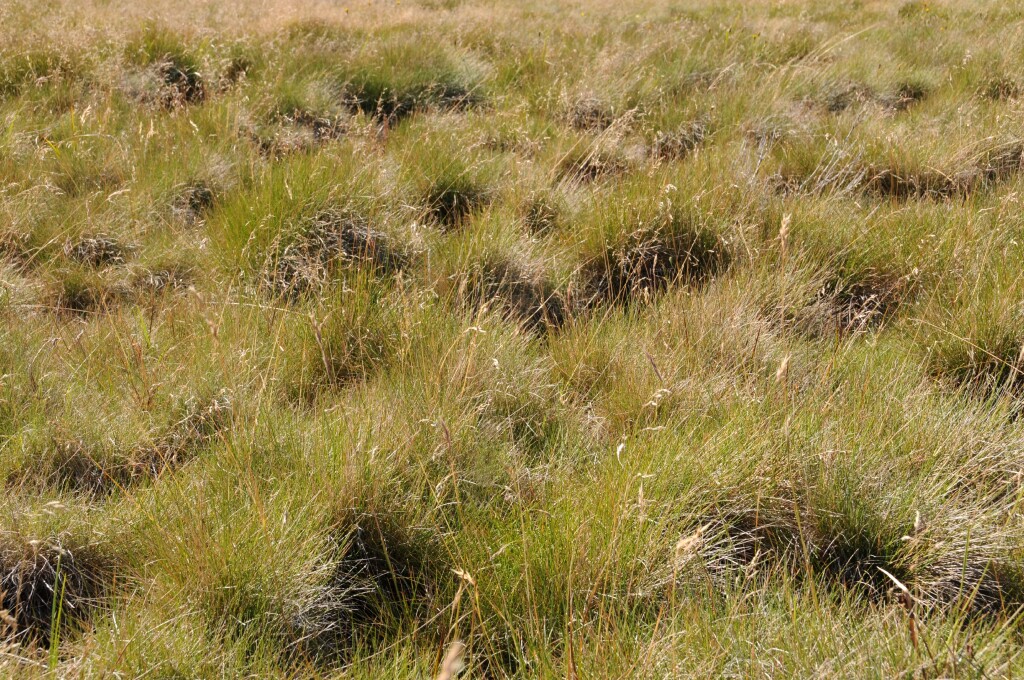Poa costiniana
Vickery Bog Snow-grassTufted glabrous perennial, culms erect, to c. 80 cm high. Leaves smooth; sheath mostly pallid, occasionally purplish; blade closely folded, terete or slightly angular, rather rigid, sharp-pointed at apex, to c. 40 cm long and 1.5 mm diam., indistinctly nerved; ligule truncate, firmly membranous, mostly 0.5–1 mm long. Inflorescence a more or less pyramidal panicle, to 20 cm long and 10 cm wide. Spikelets 2–5-flowered, 3–6 mm long, green or more often purplish; lower glume slightly shorter than upper, both 3-nerved (rarely the lower 1-nerved and the upper 3-nerved), scabrous along the keel only to scabrous-pubescent all over, mostly 3–4 mm long; lemma 5-nerved, 3.5–5 mm long, glabrous except along the keel and margins near the base; web strongly to barely developed. Flowers Nov.–Mar.
VVP, EGU, HSF, HNF, MonT, HFE, VAlp. Also NSW, Tas. Characteristic of wet heathlands and bogs throughout the Victorian alps and in cold-air drainage areas at lower altitudes (e.g. Bidwell on the upper Delegate River), occasionally extending to drier grassland communities with, e.g., P. hiemata and P. fawcettiae.
In exposed sites at the higher altitudinal range of the species (e.g. on the Bogong High Plains), populations occur with shorter and coarser leaves than those at lower elevations. In addition, the leaf-sheaths of the high-altitude populations are occasionally purple-tinted, a feature not or very rarely noted at lower altitudes. Populations on Mt Buffalo frequently include individuals with similar coloration to P. fawcettiae (i.e. glaucous blades and purplish sheaths), but with the taller stature and ecological preference typical of P. costiniana.
Walsh, N.G. (1994). Poaceae. In: Walsh, N.G.; Entwisle, T.J., Flora of Victoria Vol. 2, Ferns and Allied Plants, Conifers and Monocotyledons, pp. 356–627. Inkata Press, Melbourne.
 Spinning
Spinning

